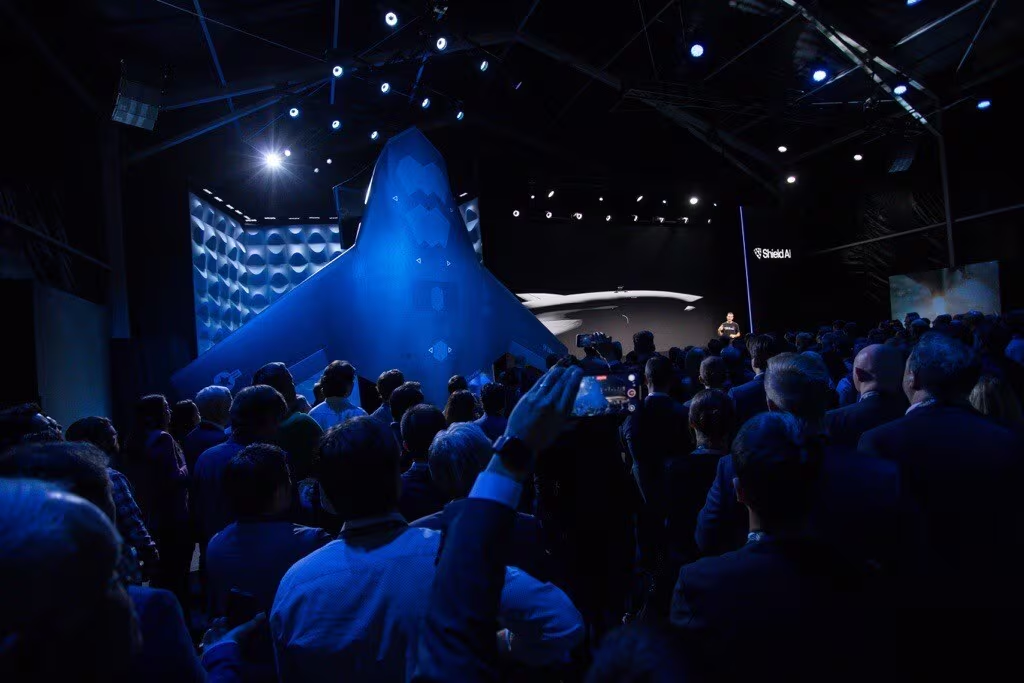The intersection of artificial intelligence and naval warfare is rapidly transforming the future of maritime operations, and a recent announcement highlights a significant leap forward in this domain: Saronic, a burgeoning leader in autonomous naval vessels, has officially partnered with NVIDIA to integrate the tech giant’s cutting-edge AI technology into its fleet. As reported by Army Recognition, this collaboration isn’t just a business deal; it marks a pivotal moment in the development of unmanned surface vessels (USVs), promising to infuse them with unprecedented levels of intelligence, autonomy, and operational capability. This partnership is poised to redefine how navies perceive and deploy their assets, pushing the boundaries of what’s possible in maritime defense.
For years, the concept of autonomous vessels has been a subject of intense research and development. The vision includes fleets of unmanned boats capable of conducting a wide range of missions, from surveillance and reconnaissance to mine countermeasures and even offensive operations, all while reducing risk to human personnel. Saronic, with its innovative approach to designing and building these next-generation naval platforms, has emerged as a key player in bringing this vision to fruition. Their focus on rugged, adaptable, and intelligent USVs has positioned them at the forefront of this technological revolution.
NVIDIA, on the other hand, is a household name in the world of high-performance computing and artificial intelligence. While initially known for its graphics processing units (GPUs) that revolutionized gaming, NVIDIA’s technology has become the de facto standard for powering AI workloads across virtually every industry, from self-driving cars to advanced robotics and scientific research. Their platforms provide the raw computational power and sophisticated software frameworks necessary to process vast amounts of data in real-time, enabling complex decision-making in dynamic environments.
The synergy between Saronic’s naval expertise and NVIDIA’s AI prowess is clear. Autonomous naval vessels, by their very nature, require the ability to perceive their surroundings, interpret sensor data, navigate complex waterways, identify threats, and make instantaneous decisions without constant human intervention. This demands incredibly powerful on-board processing capabilities and highly advanced AI algorithms.
Integrating NVIDIA’s technology means that Saronic’s autonomous naval vessels will be equipped with the “brains” to handle these challenges. This will likely involve NVIDIA’s Jetson platform, known for its ability to deliver AI at the edge – meaning powerful AI processing can happen directly on the vessel, rather than relying solely on cloud connectivity. This is crucial for maritime operations, where reliable, high-bandwidth communication can be intermittent or actively jammed.
Imagine a Saronic USV, powered by NVIDIA AI, autonomously navigating a busy strait, detecting and classifying various surface contacts, identifying potential threats, and relaying critical intelligence back to a command center, all while adapting to changing weather conditions and sea states. The AI could be trained on massive datasets of radar, lidar, sonar, and optical sensor data, allowing it to accurately differentiate between friendly vessels, commercial traffic, and potential adversaries. It could learn to predict vessel movements, optimize routes to avoid collisions, and even conduct sophisticated pattern-of-life analysis for extended surveillance missions.
Beyond basic navigation and threat detection, NVIDIA’s AI could enable Saronic’s vessels to perform more complex, mission-specific tasks with greater autonomy. For instance, in mine countermeasures, the AI could process sonar data to identify and classify underwater objects with higher accuracy, reducing false positives and accelerating clearance operations. For anti-submarine warfare (ASW) missions, USVs could operate in coordinated swarms, using AI to collectively process acoustic data, localize submarines, and track their movements, providing an unprecedented level of coverage and persistence.
The implications for naval forces are profound. This partnership can lead to USVs that are not only more capable but also more cost-effective to operate. By reducing the need for human crews in hazardous environments, navies can significantly lower personnel costs, mitigate risks to sailors, and free up manned assets for other critical missions. Furthermore, the ability to deploy large numbers of intelligent, interconnected autonomous vessels could create a force multiplier effect, enhancing surveillance capabilities, extending operational ranges, and presenting adversaries with complex dilemmas.
This collaboration also highlights a broader trend in defense innovation: the increasing reliance on commercial off-the-shelf (COTS) technology, particularly in the realm of AI and software. By leveraging NVIDIA’s established and rapidly evolving AI platforms, Saronic can accelerate its development cycles, tap into a vast ecosystem of developers and tools, and bring advanced capabilities to market faster than if it were to develop all components from scratch. This agile approach is essential in a rapidly evolving technological landscape.
Looking ahead, the partnership between Saronic and NVIDIA could pave the way for even more sophisticated autonomous naval operations. Future developments might include AI-powered swarm intelligence, where multiple USVs communicate and cooperate autonomously to achieve complex objectives; advanced human-machine teaming, allowing human operators to supervise and direct entire fleets of autonomous vessels with intuitive interfaces; and the continuous learning capabilities of AI, allowing these vessels to adapt and improve their performance over time based on real-world operational data.
Ultimately, this partnership signifies a fundamental shift towards a more intelligent, autonomous, and resilient naval force. As Saronic’s vessels, powered by NVIDIA’s AI, begin to patrol the seas, they will not only enhance operational effectiveness but also reshape the very definition of naval power in the 21st century.



